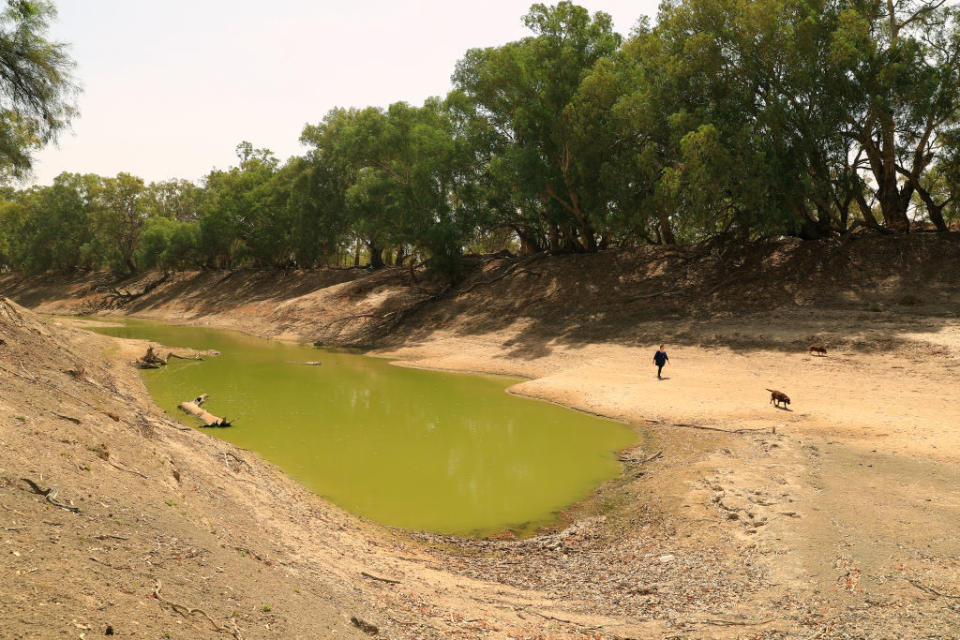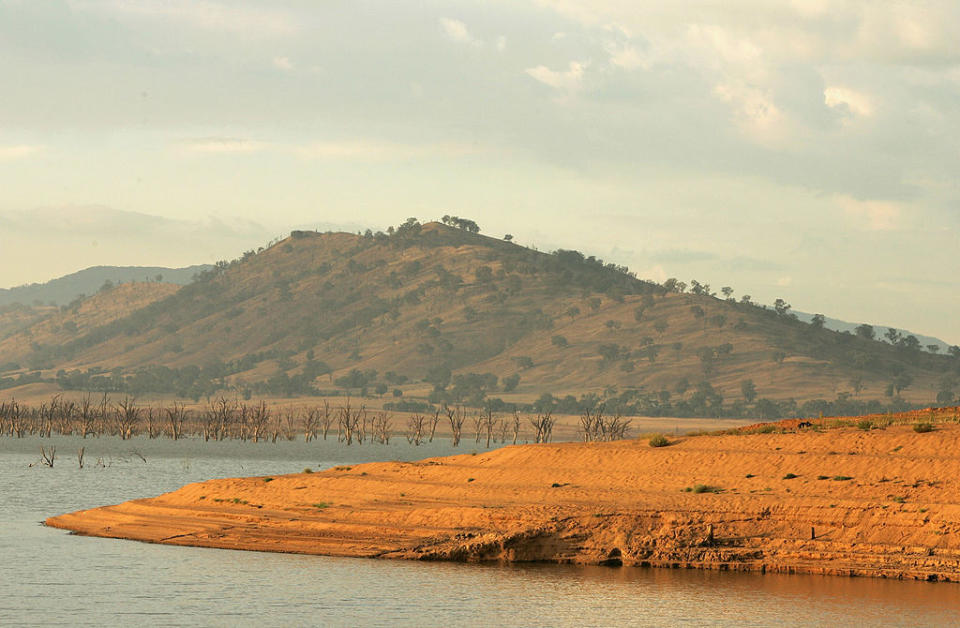What’s going on in the Murray-Darling Basin?

The Murray-Darling Basin has been the cause of a lot of debate across the four states it runs through: Queensland, New South Wales, Victoria and South Australia.
The state governments allocated permits to extract water for human uses (irrigated agriculture and urban water), but in the second half of the 20th century, those allocations outgrew the sustainable capacity of the river.
This led to the 1991 outbreak of toxic blue-green algae over 1,200km of the Darling River - which continues to occur - and eventually, highlighted the need for more water in the river.

Eventually, a solution was put in place: water restrictions. But what was meant to be a short-term fix actually turned into a longer-term solution, because other solutions, like legislation and dams, didn’t work.
Earlier this year, the Basin made headlines again after reports showed hundreds of billions of litres of water was missing from the river.
That Australian National University study found efforts to recover water in the Basin actually could have resulted in a further reduction in net stream and river flows.
The ANU report suggested that if in fact there was a reduction in net stream and river flows, the Australian Government’s decision to fund infrastructure subsidies to help out the river would’ve actually “compromised the delivery of key objects of the Water Act”.
What’s in the Water Act?
The Water Act was introduced in 2007 and established reforms to set aside more water for the environment - around 2,750 gigalitres of surface water (water flowing in the open air, not underground).
To start, the Federal Government invested $3.1 billion to buy back water rights, and invested $8 billion to modernise infrastructure and water efficiency improvements, according to The Conversation.

The reforms aimed to improve water delivery and make irrigation more efficient.
As of this year, the Government has spent $2.5 billion of its promised $3.1 billion towards water rights, and $4 billion of its $8 billion to improve infrastructure.
Why hasn’t the government invested all of its cash, or achieved its target?
According to University of Melbourne professor Q J Wang and research fellow at the Department of Infrastructure Engineering, Avril Horne, it’s because of “return flows”.
Return flow refers to water that returns to the river, rather than being consumed by plants due to irrigation.
More efficient infrastructure and irrigation means less return flow to the river, but if those reductions aren’t considered when calculating water reductions, this leads to implications for other water users that previously benefited from return flows.
Basically, the government hadn’t calculated the return flows properly, which meant the volume of water extracted for irrigation was never adjusted - something the ANU study revealed earlier this year too.
Taxpayers had spent $3.5 billion on water use efficiency, but the Government hadn’t actually returned the necessary water back into the river.
Chief executive of the National Irrigators Council, Steve Whan, told the ABC earlier this year that the government’s version of the water that had been recovered was “quite different” to the academics’.

What’s the latest with the Murray-Darling Basin?
Last night, the ABC’s Four Corners program Cash Splash showed that any efforts by the government to aid the river had actually resulted in more water being sucked dry by irrigators.
The show revealed that over $4 billion in Commonwealth funds had been handed to irrigators, which allowed them to expand their operations and use more of the Basin’s water.
It was a program meant to reduce the amount of water going into irrigation, but it actually increased the opportunities for irrigation, and was subsidised by taxpayers.
Essentially, after billions of dollars of taxpayer money being injected into saving the Basin, the system could be worse off than before.
What’s next for the Murray-Darling Basin?
Scientists are calling for an independent commission of inquiry into the management of water flows in the Basin.
Professor Wang and Horne said there was a need for betting ongoing data collection and regular evaluations
“Both taxpayer investments and the water market are changing irrigation to become more efficient and reducing the river’s base flow,” they wrote in The Conversation.
“With this in mind, we need to regularly reexamine how we share water between everyone (and everything) that needs it, particularly in extended dry periods.”
Make your money work with Yahoo Finance’s daily newsletter. Sign up here and stay on top of the latest money, news and tech news.

 Yahoo Finance
Yahoo Finance 